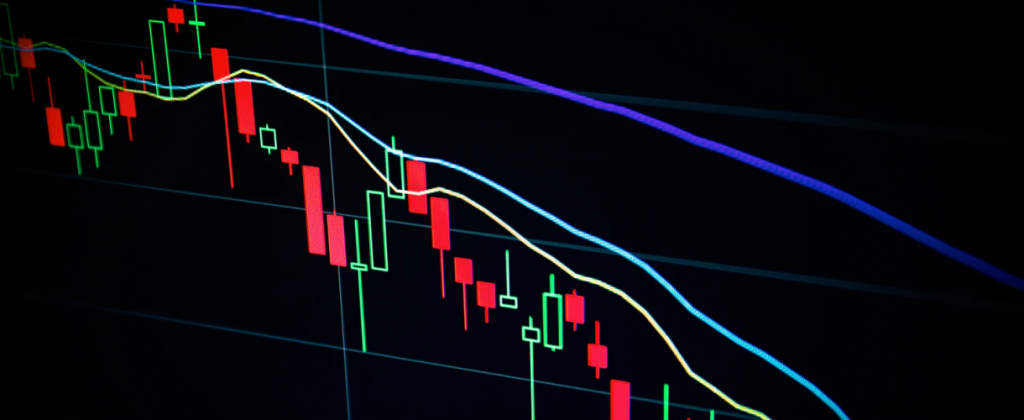Chances are you’re a financial investor or trader if you’re looking into futures trading. Or you could be a newbie to financial investments and are doing your due diligence before jumping in.
Either way, this article is designed to give you an overview of futures trading. We answer the question ‘what are futures’, and we discuss futures contracts, and how you can use futures in financial trading.
>>Want to start trading? Check out our guides below or visit PublicFinanceInternational for more.
What are Futures?
Futures are financial derivative contracts that give traders permission to transact an underlying asset at a specific future date and at a specific price. The buyer and seller are required to buy and sell the futures contract at the decided price regardless of the value of the asset at the date of expiration.
The underlying asset can include anything from financial instruments like currencies, stocks, or bonds, to physical commodities like energy, oil, and minerals.
Common uses for futures contracts are hedging and trade speculation. These strategies are great if you want to generate profits.
Futures Contracts Explained
A futures contract is an investment vehicle that gives traders the opportunity to wager on the price of an underlying asset. This includes physical commodities and financial assets.
There are a plethora of futures contracts available to traders and they include oil, stocks, currencies, and agricultural products.
Contracts are generally traded on large, regulated market exchanges such as those run by the CME Group. It is common practice for the market exchange to determine whether the contract specifies a physical delivery or if it can be settled with cash. In our experience, traders prefer cash settlement.
Futures contracts are a great option for traders who want to wager on price point movements of financial assets and commodities. If done correctly, and with a bit of luck, these wagers have the potential to generate large profits.
Pros
- Allow traders to wager on the price of the underlying asset
- Allow corporations and companies to hedge the price of their commodities to protect against future losses
- Make allowances for leverage and margin calls
Cons
- Using leverage and margin calls increase the risks
- Hedging price points prevents companies from making a profit should the price point of the commodity increase
Trading Futures
There are two main methods in futures trading:
- Hedging
- Speculation
The method you choose and how often you choose to trade is completely up to you. In this section, we cover these two main methods, as well as day trading futures.
Futures Hedging
Futures hedging occurs when a trader hedge’s the price point movements of the underlying asset. This method is often used by large corporations when they want to decrease the risk of an unfavorable price point movement of an asset.
The reason this method is used is to decrease the risk of incurring a loss and losing money.
An example of this could be a wheat farmer who uses futures contracts to hedge the price of their wheat crops. In doing so, the farmer locks the price of the wheat at its current value. Therefore, if his wheat crops drop in value, the farmer would be able to make a gain from the hedge and offset this loss when selling his wheat.
The basic premise of futures hedging is to lock in the price of the underlying asset in the hopes that the gains from the hedge and the loss incurred offset each other. This ensures that the underlying asset is traded at a decent market price.
Futures Speculation
Much like hedging, futures speculation is focused on the price point movements of an underlying asset. The key difference is that speculation involves traders placing a wager on whether the price of the asset will increase or decrease.
There are two positions traders can take when trading futures contracts, namely; the long position and the short position.
The Long Position
This is when a trader wagers that the price of the underlying asset will increase above the contract price by the expiration date. If the price increases by the expiration date, the difference between the prices will equal a profit for the trader.
For example, if the underlying asset is valued at $40 and it increases to $100 by the expiration date, the futures contract would be cash-settled and the trader would receive a $60 profit.
However, if the price of the asset drops below the price listed on the contract, the trader would incur a loss equal to the difference between the prices.
The Short Position
This is when a trader wagers that the price of the underlying asset will decrease below the price listed on the contract by the expiration date.
If the price of the underlying asset decreases, the trader makes a profit equal to the difference between the contract price and the exchange price. However, if the price of the underlying asset increases, the trader incurs a loss.
Of importance here is that by trading on a margin, traders are able to take out larger positions than their accounts would usually allow.
For example, a trader with an account balance of $20 could enter a position to the value of $100. Should their wager ring true, they can make massive profits. On the flip side, this could also mean incurring major losses.
If a trader makes a loss, the broker makes a margin call which requires the trader to make an additional deposit in order to cover the loss made.
For example, if the trader makes a loss of $100 but only has $20 in their account, the broker would request that they deposit $80 in order to cover the loss.
Day Trading Futures
Unlike the previous two methods used, day trading futures isn’t defined by the price point movements of the underlying asset. Instead, it is defined by the trade frequency. It involves trading contracts multiple times within the same day without holding overnight positions. It occurs at a rapid frequency and the duration of trades varies from a few seconds to a couple of minutes.
>>Looking to day trade futures? Check out our guide on the Best Brokers for Day Trading
The aim of day trading is to earn a profit off the price fluctuations of the underlying asset rather than wagering on the price of the underlying asset.
For example, if a day trader buys a futures contract at $50 and sells it at $60 they have made a profit.
Unfortunately, day trading futures is very risky and highly volatile. Therefore, we couldn’t recommend this method to beginner traders since it requires extensive experience, time, and know-how.
Conclusion
In its simplest form, futures trading is simply a wager traders make on the price point movements of an underlying asset, whether that be physical assets like commodities or financial instruments.
Futures contracts are a great financial asset to invest in because it offers traders the opportunity to make major profits by using leverage or margin calls.
However, with greater profits come greater risks.
In addition to the risks associated with futures trading, traders also need to be able to read the market and have a good working knowledge of how financial markets work.




